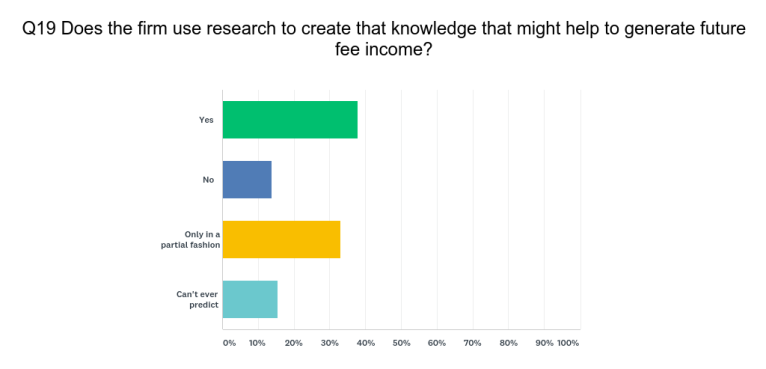WTF was that? A total train wreck. Many architects by now will be working at home and projects would have disappeared overnight. For some firms, there will be huge, and sudden, gaps in their portfolio of projects. For other firms who have lost a few jobs, kept a few and who might maybe get a few new ones, the future is highly uncertain, and project fee revenues are being decimated.
The following thoughts apply to anyone in the architect universe. This includes practitioners in small and large firms, solo firms and even people just struggling to manage their career after being made redundant.
Architects of a certain age will be accustomed to boom-bust cycles; for the most part, it is the nature of the business. The sequences of boom-bust will be familiar to those firm’s who have in the past cycled through external economic downturns, shocks, changes in their markets or merely the vagaries of clueless clients. But hey, here we all are again, and the global pandemic is a bitter kick-in-the head-mofo.
The last crash in 2009 was not as severe as this one. But it also wiped out projects, the money behind those projects and various firms evaporated quickly. In some ways, the GFC was scarier because no one knew what was happening with the flows and circuits of capital in an opaque global financial system. Depending on your country, the information around the COVID-19 pandemic is perhaps more transparent, and we all know what we need to do to stay safe. But fuck this has been a quick slide into the trough and how will you survive until the upswing. So what should you do, if you want your practice (no matter its size) to survive and you want to figure out what to do next. What are the strategic moves you need to make next?
Don’t Panic

Whatever you do, don’t panic. Panic leads to anxiety and fear has a sequential path; anxiety, then indecision and then to leadership and firm paralysis. Rather than panic, architects will need to analyse and then determine the scale, range and timing of actions required across different parts of their firms. This type of thinking requires thinking that can range across different organisational (e.g. marketing and finance) and project workflows. Thinking related to general management is critical. If all you have been is a design creative, or a client grappling suit or an arse-licking yes person, then you need to think outside the box.
Cash flow

The sharks may be circling but cash is still king and cash flow is central to firm survival. You better work out how to extend your debts and call in what is owed to you. Maybe after this, architects will figure out how vital cash flow forecasting is. Near-term and medium-term issues of cash management are critical. Strategic and operational decisions at the bottom of the trough can’t be isolated from cash flow information.
Game and Scenario Planning

The external pandemic shock will completely upend the competitive landscape for architectural services. I would not be thinking that it is going to business as usual after this. The fabric of global trade, supply chains and knowledge creation will be completely reset. While architecture itself, all too annoyingly, seems to exhibit a never-changing industry structure the markets architects compete in and provide services to will never be the same again.
For this reason, architects will need to propose, identify, rehearse and game-plan future scenarios for the markets they work in. Just being intuitive in your small practice is not going to help your game-planning. Game planning needs to be comprehensive and systematic. No matter how large or small your practice is, not doing this will limit your resilience coming out of the trough.
More than ever, architects will need to understand clients perspectives and client markets. Sure, everyone is pandemic fucked. But architects need to understand the dimensions of the uncertainties that their clients and potential clients are dealing with.
Reinvention

Developing greater foresight will help a firm to reinvent and reconfigure itself. Things won’t be going back to Business As Usual. Architects need to see this as an opportunity to do things differently. Nothing should be considered sacred in terms of reinvention. Decision-making norms, firm culture, organisational structures, operational steps and knowledge creation should all be open questions. The firms that can select and then reconfigure things quickly and confidently will do better in the new environment on the other side. Surprisingly, it may be a good time to innovate, and yeah make your firm more inclusive.
Back from the dead

Making the return to new operational regimes will be difficult. Prioritising, sequencing and especially timing decisions will be critical. For any architectural practice returning to a “new normal” of operations will centre on two issues. Firstly, and foremostly, staff. How will you rehire and retrain people? What are the operational contingencies relating to the knowledge and experience you need to put back into place?
For example, if you got rid of your research, business development or marketing staff as the pandemic hit to save money, you won’t get back as quickly as possible. These are the very people, or initiatives, you should keep. Not every firm will survive this, so it is better to be back from the dead with your marketing functions intact ready to take advantage of new market spaces. Better to have a few new research ideas up your sleeve.
Secondly, if you have spent your life being an IT cheapskate, then coming back from the dead will be harder. Robust IT infrastructure enabling new forms of working and collaboration will be inevitable in the new landscape.
Finally

If you were ignorant enough to slash and burn your staff, to throw them unceremoniously out of the bus, as the pandemic hit, you might arguably have trashed your brand. Even when an entire project cohort can’t be sustained, the smart firms downsize architects with civility and then carefully and incrementally.
Resilient firms will still maintain relationships with their staff. Not surprisingly, the Architects Lobby is keen to learn about the experiences of architectural workers in this climate, and I recommend their survey, which can be found here.
Oh, and don’t forget all of the resources around managing through this time at the Architect’s Consulting Association to be found here.
When architects come out of this, the architect universe will be kind of the same but also very very different.































